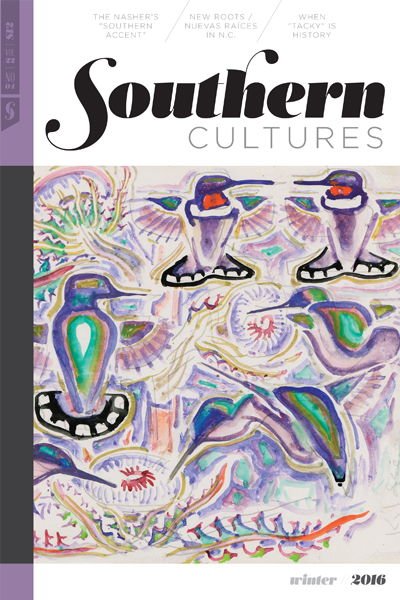Even in a nation inclined to “constantly form associations,” as de Tocqueville observed in 1831, residents of New Orleans excelled in organizing lodges, religious groups, literary societies, charitable organizations, sporting clubs, social clubs, and, most of all, benevolent associations, the most popular—and practical—organizations to which New Orleans’ polyglot population flocked. By 1880, these organizations (also referred to as mutual aid societies) had become “an integral part of life in the city for both blacks and whites,” acting as hybrid insurance/ social clubs for their members, providing doctor’s care, sickness and disability pensions, death benefits to survivors, and funeral and burial arrangements for members and their dependents. By the mid-twentieth century, however, they had begun to change their focus, becoming less about insurance and more about socializing. Despite these differences, we can still see the influence of the original benevolent associations in today’s social aid and pleasure clubs, which continue traditions and practices that New Orleanians have enjoyed for more than a century.1
Benevolent associations helped their members through sickness, hard times, and, sometimes, destitution. Since the city offered little in the way of public charity, benevolent associations often were the only means of medical and financial assistance available to the poor and working-class members of the community. Like most of these associations, the New Lusitanos Benevolent Association (1858–ca. 1920) promised “to support and aid all members, when ill and in need of help, to bury those members who are called by the Supreme Maker, to console the parents, and to aid and support their widows and orphans.” Disease and high mortality rates propelled many people into membership and made the societies invaluable in a city with little clean water until the city finally developed methods of purifying and distributing water and modernized its sewerage and drainage systems in the years between 1896 and 1915. Although a water works had been in place since the 1820s when Benjamin Latrobe designed the city’s first system, it remained inadequate to the task of providing potable water to most of the city’s residents throughout the nineteenth century. Referring to the filthy piped water, a German newspaper in 1853 admonished New Orleanians to “drink no water—drink beer!” Many who didn’t take this advice chose instead to drink rainwater stored in open wooden cisterns in their yards, inadvertently contributing to mosquito-borne disease. Raging yellow fever epidemics killed more than 40,000 residents between 1793 and 1905, the last year yellow jack plagued the city. Frequent outbreaks of cholera, typhus, malaria, and smallpox took the lives of many more. As cultural geographer Richard Campanella has characterized it, New Orleans became “the nation’s filthiest, least healthy, and most death-prone major city for much of the nineteenth century.”2
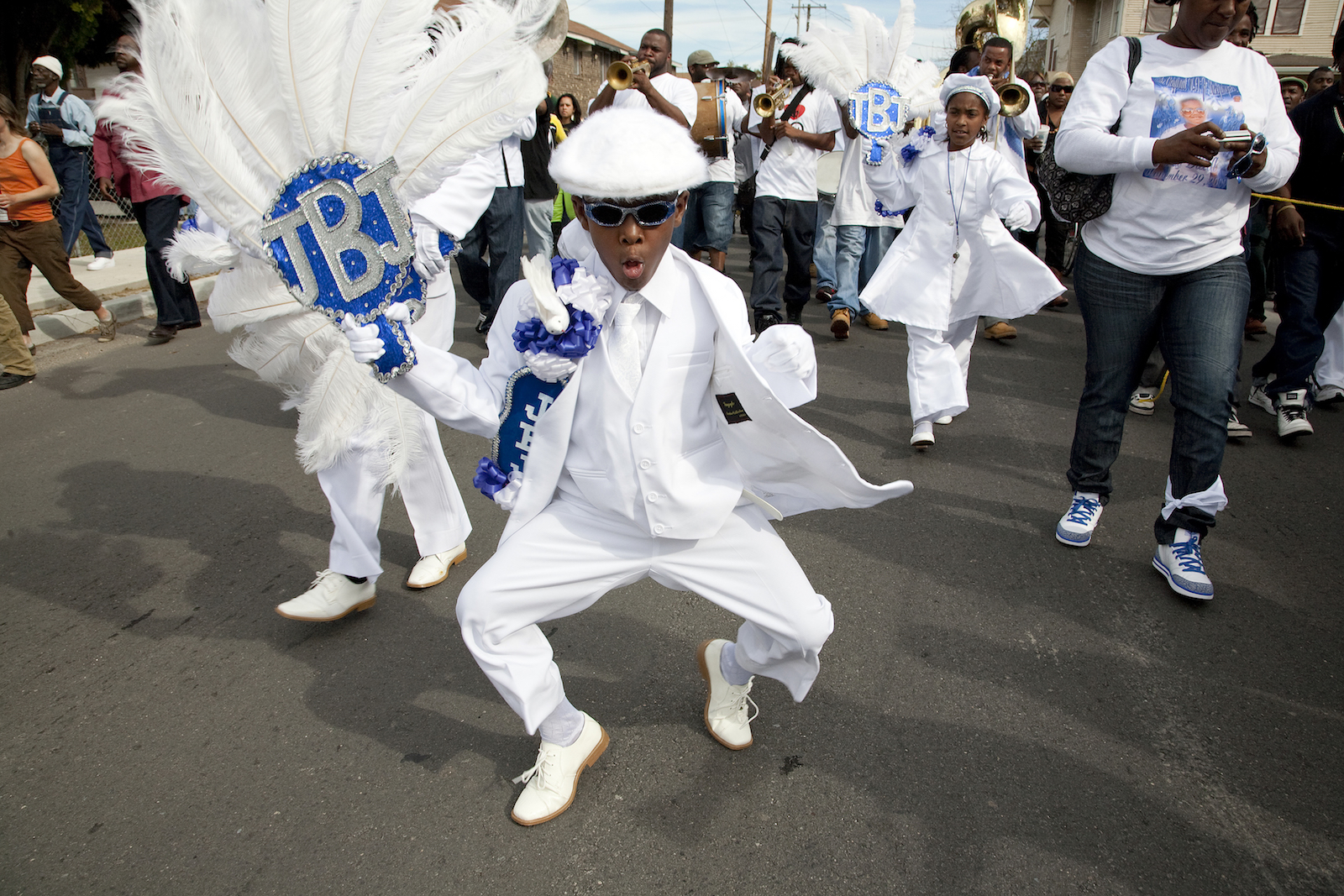
The constant threat of disease provided one of many reasons why newly arrived immigrants to New Orleans looked to benevolent associations to provide care and comfort. As the second-largest port city in nineteenth-century America, New Orleans saw its population expand and change with a steady stream of new immigrants entering the city and adding new languages, new faces, and new ways of living to this “world in miniature.” From 1803 to 1810, the population of New Orleans grew to twice its previous size as white and black refugees streamed out of Saint-Domingue during the revolution and founding of Haiti. Between 1820 and 1860, approximately 550,000 more immigrants arrived in America through the port of New Orleans to seek opportunities in the New World. By 1850, the mixture of older and newer arrivals—French, Spanish, Africans, English, Germans, Irish, Greeks, Swiss, Portuguese, Italians, Cubans, Filipinos, Mexicans, Croats, Slavs, Chinese, Sicilians, and others—produced the fifth-largest and one of the most ethnically diverse cities in the United States. The cultural complexity of New Orleans compelled one nineteenth-century visitor to remark that “it seems almost impossible to believe that one is in America.”3
In a city full of strangers, immigrants, seeking others who shared common customs, language, and culture, joined benevolent associations based on their national origins. The Societé Francaise, the Contessa Entellina Society, the Ibera Benevolent Association, the Italian Mutual Benevolent Association, the Hibernian Society, the Portuguese Benevolent Association, the German Men’s and German Women’s Benevolent Associations, the Shamrock Benevolent Association, and numerous others offered companionship and financial and medical assistance to the newly arrived. By the end of the nineteenth century, the German community alone had organized more than twenty-five benevolent associations, and by 1910 the Italians had formed thirty of their own.4
The city’s churches and synagogues were actively involved in benevolence, and locals of national secret societies such as Masons, Odd Fellows, Knights of Pythias, Knights Templar, and Eastern Star proved popular with both blacks and whites. Labor organizations provided medical as well as labor-related benefits to their fellow workers. The oldest, the Mechanics Society of New Orleans, founded in 1806, pledged “to relieve the wants, comfort the sufferings, and to promote the happiness of their fellow creatures.” The Firemen’s Charitable and Benevolent Association, established in 1835, offered health care, disability payments, and burials to volunteer fire fighters and their families. In addition to regulating workers’ wages and hours, the Longshoremen’s Protective Union Benevolent Association (est. 1872), like many other such groups, arranged medical care and death benefits for members and their survivors. In New Orleans, even barkeeps launched their own association in 1853.5
To relieve the wants, comfort the sufferings, and to promote the happiness of their fellow creatures.
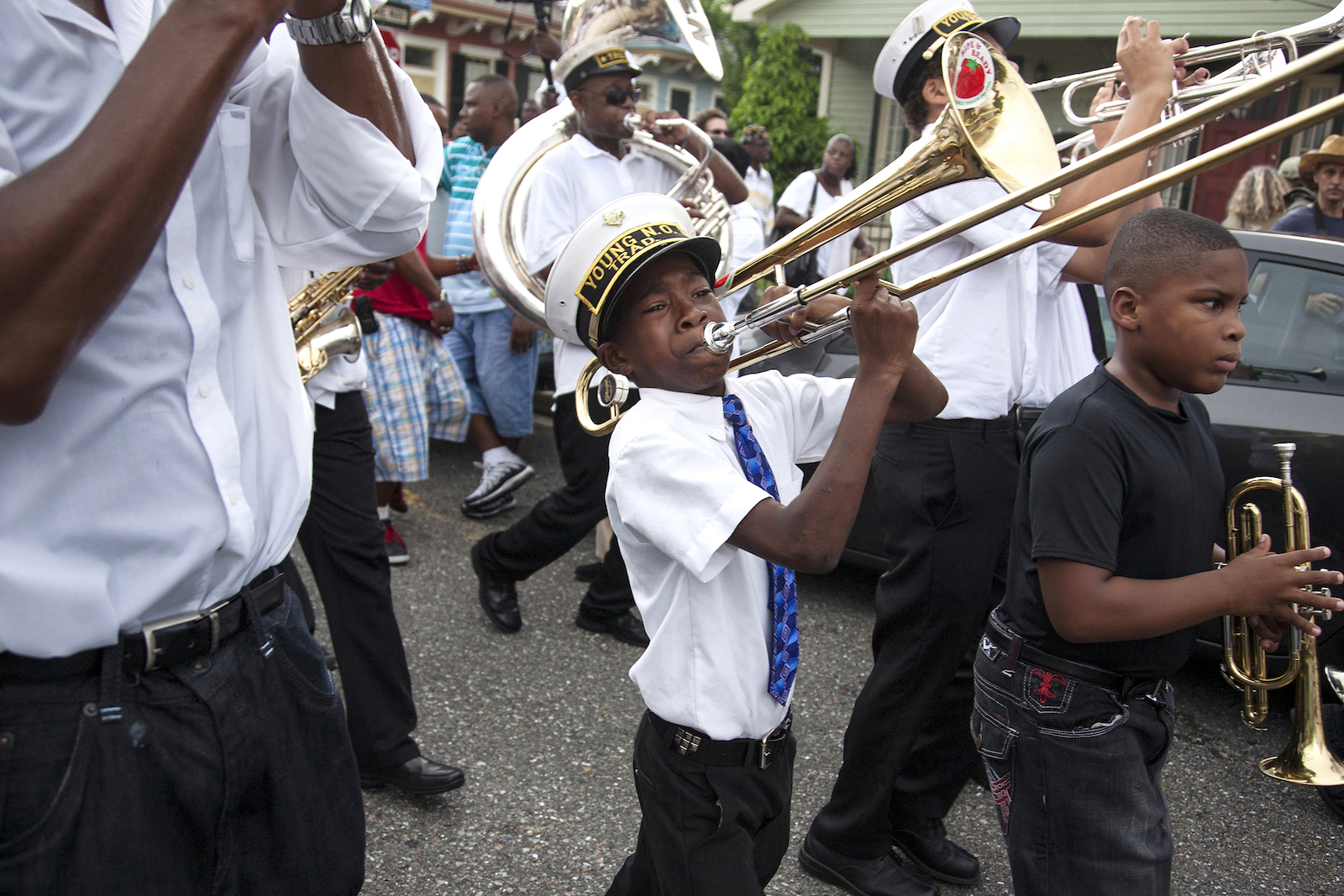
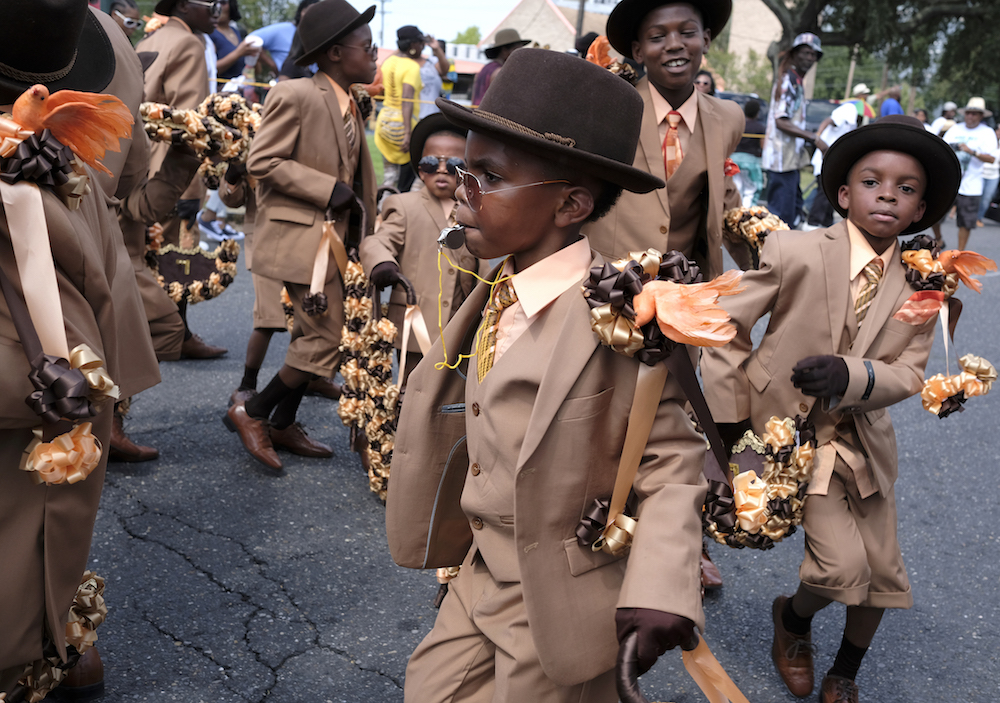
Free people of color, the gens de couleur libre, established more than thirty mutual aid societies in nineteenth-century New Orleans, usually restricting membership to other French-speaking free blacks of comparable education and wealth. La Societé de la Perseverance, the Union Bank Society, the Benevolent Association of the Veterans of 1815, the Dieu Nous Protege Benevolent and Mutual Aid Association, and the Colored Female Benevolent Society of Louisiana numbered among the earliest black Creole mutual aid societies. Free black skilled workers and black veterans joined together to form La Societé des Artisans in 1834. Two years later, free black professionals established La Societé d’Economie et d’Assistance Mutuelle, which grew to be the wealthiest of the Creole benevolent associations. Later in the nineteenth century, Creoles of color organized the Amis Sinceres, Francs Amis, and Freres Amis benevolent societies, among others. French-speaking Creoles of color who worked as cigar makers founded La Societé des Jeunes Amis in 1867.6
These societies assisted their community though direct aid to members as well as by donations to local churches, orphanages, and hospitals. The Young Female Benevolent Association reflected this practice in its 1891 incorporation papers, naming acts of “charity and benevolence” as one of its goals. Associations frequently sponsored special fundraisers for their favorite charities. After a flood in the city in 1874, the Economy Society made generous donations for “the relief of the poor” and were regular contributors to Charity Hospital and other institutions. Amis Sinceres made substantial donations to a fund to renovate the black Central Church in 1887. For its fiftieth anniversary celebration, the Societé Francaise de Bienfaisance et d’Assistance Mutuelle held a “grand fête” at the Fair Grounds with half the proceeds going to the Eye, Ear, Nose, and Throat Hospital. The Young Men’s Vidalia Benevolent Mutual Aid and Association devoted itself to the support of services to elderly blacks.7
The societies contributed to their community in other ways, as well. When they could afford it, they bought their own meeting halls. Because free people of color had the same right to own property as whites in antebellum New Orleans, black Creoles built some of the earliest society halls, including, in 1853, Economy Hall on Ursulines Avenue in the Tremé, where the Economy Society sponsored lectures, political meetings, charity balls, banquets, and all-night dances. In 1861, La Societé des Francs Amis Hall opened, providing another choice for community gatherings and musical entertainment.8
After Emancipation, ex-slaves left rural plantations and settled in the city where municipal government offered little in the way of public assistance. Even the Freedman’s Aid Bureau provided only minimal health care and other services to the former slaves, and New Orleans “was utterly unprepared to handle the increasing needs of the urban poor caused by foreign immigration, war, reconstruction, and recurrent industrial depressions.” Local charities, already underfunded, could not begin to meet all the needs of the city’s poor. New Orleans city government generally left public relief to private institutions, making some contributions to them but never enough to meet their needs. Charities remained chronically short of funds and consistently discriminatory in their activities. The consequences of these public policies were particularly manifest among the poor and working-class members of the African American community. Often living in crowded quarters with few sanitation services, drinking unsanitary water, having little access to health care outside of the overcrowded Charity Hospital, and excluded because of their race from most charitable institutions, African Americans suffered significantly more health problems and higher death rates than whites in the late nineteenth century.9
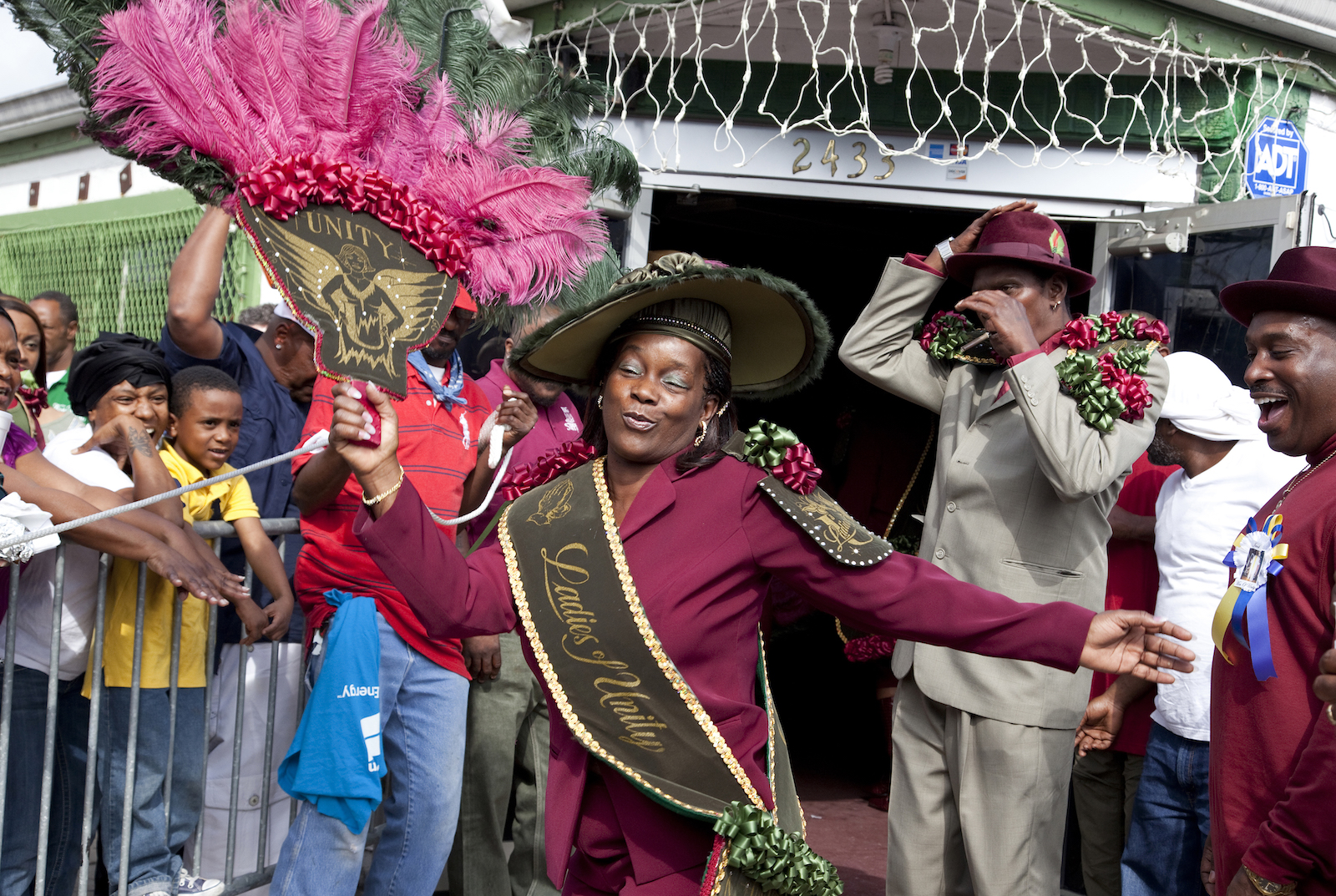
It is little wonder that in this environment the number of black mutual aid societies mushroomed. As one local newspaper observed in 1883, they grew “so numerous . . . they can scarcely be enumerated.” From Emancipation through the 1880s, African Americans organized more than two hundred benevolent associations in New Orleans, helping their members find the kind of medical, spiritual, and material support they needed in a society largely indifferent to their needs. With little or no insurance available to them, and with public services minimal at best, African Americans depended primarily on each other, building their own self-help institutions and combining their assets to help all survive in the face of segregation and official neglect. According to an 1888 New Orleans medical journal, four-fifths of the New Orleans black population belonged to a benevolent association. The goals set forth in the constitution of the Young and True Friends reflected the ambitions of most mutual aid societies: “The object of this Association shall be purely charitable . . . to assist members according to its power and ability in every instance of sickness and extreme want, and to bury them whenever it shall please Almighty God to separate them from their fellow members.”10
The object of this Association shall be purely charitable . . . to assist members according to its power and ability in every instance of sickness and extreme want, and to bury them whenever it shall please Almighty God to separate them from their fellow members.
Membership in these organizations was selective. In most organizations, applicants had to meet certain age and health requirements and prove their good character. Young and True Friends, an all-male society, required a candidate to be between sixteen and forty-five years of age, to be respectable and have an “obedient disposition.” An applicant had to furnish a doctor’s certificate showing him free from “all infirmities that may prevent him from gaining a livelihood.” Men’s organizations generally offered medical and burial benefits to “passive” members, dependents of active members. In Ladies Friends of Faith, an investigating committee called on the candidate at her home and communicated its findings to the whole membership before it voted on her application. Votes were cast with black and white balls, and applicants sometimes received too many black balls to gain admittance. Mrs. M. Walker, for example, narrowly failed in her membership bid with a vote of eight white and nine black balls.11
Every year, the societies held elections to choose their officers, often electing to paid positions “society mechanics,” men who had been trained in parliamentary procedure and had organizational experience. Even all-female societies frequently chose such men to preside over them. Ladies Friends of Faith, for example, elected a male president and a male chaplain. Societies also elected druggists, undertakers, and doctors to care for society members at low fixed prices. All of these professionals competed for the society’s business and were voted on by the membership.12
Doctors generally offered a plan whereby association members paid a fee every three months to retain their services, usually 25 cents. The Ladies Friends of Faith revised the “doctor’s quarterly” in their group and, instead, paid the physician one dollar a visit. When a member fell ill he could report his condition to the relief committee, which would judge whether to call in a doctor, or he might go directly to a physician, who would give him a certificate of illness to present to the society, depending on the rules of the association. If the illness were serious, two members from the committee would take turns staying up all night with the invalid. In St. Mary’s Benevolent Association, as in most associations, members of the relief committee would rotate attendance on the sick member until all of them had been on duty two nights before the rotation would start again, if necessary. Failing to show up for sick duty would result in a fine, unless the member or a family member was ill. Societies covered the cost of prescription drugs by providing the patient with a drug book from the society’s pharmacist to use for filling prescriptions, with the cost of the drugs charged to the association.13
Members also received cash benefits while they were ill and unable to work. Ladies Friends allocated $3.00 a week for members if they did not use the services of a doctor or pharmacist and $2.00 a week if they did. If the illness persisted more than six months, members received half of these sums. Societies were strict about checking on sick members lest they be duped into paying fraudulent claims out of their limited budgets. When members of the Ladies Friends of Faith relief committee discovered a sick colleague sitting up in bed sewing, they promptly cut off her relief payments. The Love and Charity Benevolent Association withheld a pension from one of its members who was found “not in bed” and deemed not sick enough for relief.14
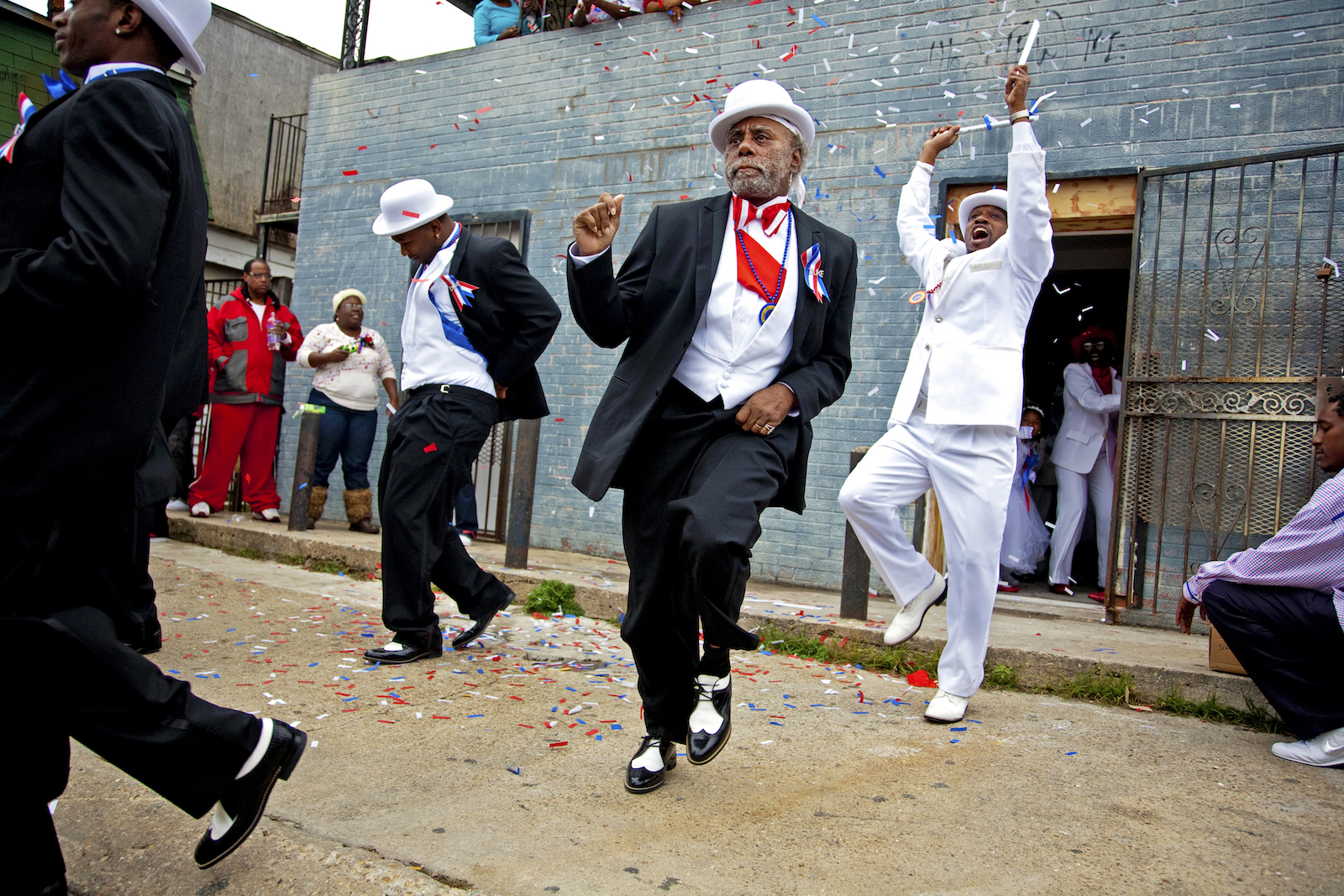
Typically, mutual aid associations assessed members a tax to cover the costs of a colleague’s wake and burial, most commonly, in men’s societies, one dollar, paid over a period of four months. A separate assessment paid for the funeral band. Women’s benevolent societies more commonly charged their members $.50 for a funeral, to be paid in two installments. Women did not have funerals with music. Societies also catered wakes for their members, generally allocating about $3.00 for food, coffee, wood, soap, and candles. A formal announcement in the newspaper informed members about the date and location of a funeral, and they were fined if they did not attend or appeared out of uniform. St. Elizabeth’s Temple members wore white shirtwaists, black skirts, hats, gloves, and belts in the summer and, in the winter, all black clothing. Members of Young and True Friends were required to wear a “Black Prince Albert coat and vest, black pants (Alpaca not accepted), Black Scarf Tie, White Gloves, White Standing Collars, and Black Beaver Hat” to their funerals. An official of the association would call the roll of members twice, once at the beginning and once at the end, lest anyone sneak away before the funeral ended. Members received a 25-cent fine for each missed roll call.15
The need for benevolent societies is vividly illustrated in the Ladies Friends of Faith minutes of meetings from August 1914 through September 1916, one of the few record books of these associations that have survived. It is painfully clear that the approximately 170 members of this organization suffered from poverty, frequent illnesses, and, in some cases, despair. At one meeting, the group excused three members from the normal fines for being absent from meetings. Rosalie Jackson could not attend, she explained, because her shoes had been stolen and her old ones were “too bad” to wear in public. Emma Williams was “not well and full of sorrow,” and Jane Turner “could not wear [her] shoes.” At another meeting, the secretary reported that Lizzie Brown was “suffering with swimming in her head.” Nearly half of the members received sick benefits over the course of the two years on record. Seventy of them saw the society doctor at least once, some many times.16
Not infrequently, members of Ladies Friends of Faith found themselves “unfinancial”; that is, delinquent in dues, a circumstance that gave cause for expulsion or suspension, and frequently did if the member did not supply a good reason for her indebtedness. Often, however, fellow members would “open their purses” and pay the dues owed by their needy colleagues. If their friends were in dire need, they often came to their aid, as they did in 1914 when Sister Gayten Marshall wrote to explain that she was in “financial strain” after falling and spraining her leg. “The members donated $3.40 from their purses,” the minutes of the meeting recorded. The group helped another woman because she was “out of Doors, and had no money.” On one occasion, the ladies voted to suspend the attendance rule for a time “owing to the condition of some of our members being out in service and to the hard time.” The motion also stipulated that members who missed Sister Sanders’ funeral because of their jobs “be exonerated from fine.”17
Forgiveness was not always forthcoming, however, and members were frequently fined. Offenses included late payment of dues, missing a meeting or funeral without permission, or even insubordination. When Sister Helen Rush asked to be excused from attending a meeting because she was unable to get up or down stairs, her request was denied, and she was fined 25 cents. When Sister Gertie Geddes objected to being fined a dollar for missing a member’s funeral, arguing that she had not received a formal notice about it, the steely Ladies Friends of Faith president countered that she had indeed received a notice and the fine stood. When another member objected to this ruling, the president called her to order and immediately fined her 50 cents for “failing to obey the gavel.” Likewise, he charged Sister L. M. Williams a quarter when she accused him of making up new laws “any time he got ready.” Members were frequently fined for talking back to the president, challenging his decisions or, in one case, “poking her tongue at him.”18
If they broke the rules too often, fell too far behind in their dues, or violated the standards of behavior laid out in the organization’s constitution, members could be suspended or expelled from their associations. When an argument between Sophie Wilson and the president of Ladies Friends of Faith ended with Sister Wilson throwing a spittoon at President D. H. Rhodes (also the society’s undertaker), he fined her five dollars and suspended her for ninety days. The Young and True Friends warned its members that if they were “guilty of habitual intoxication, conduct unbecoming a gentleman,” or sentenced to prison, they would be barred from the society.19
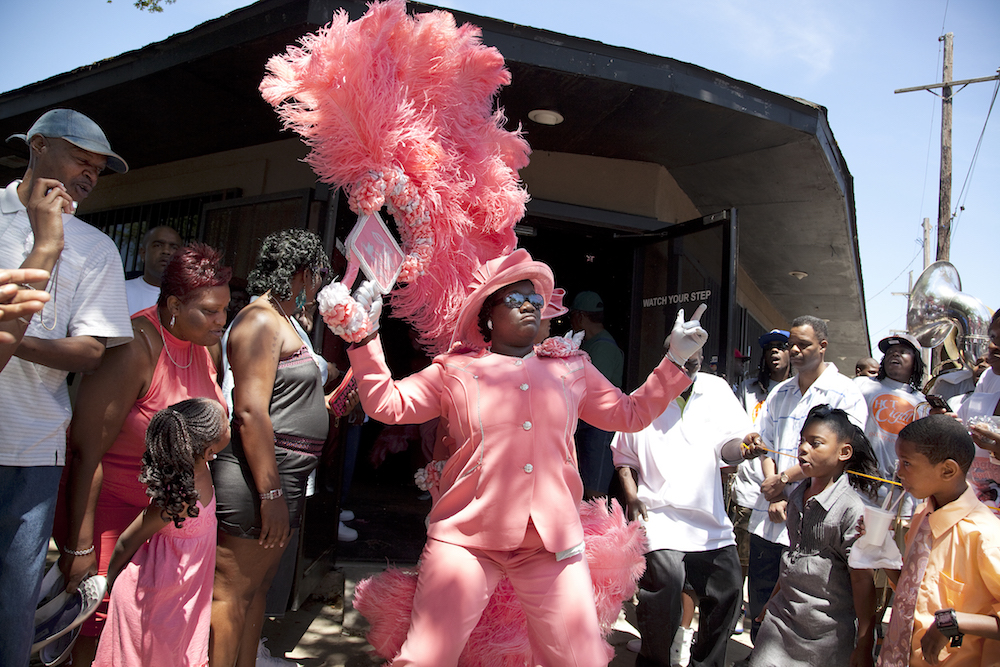
It was not only the medical and financial benefits members would forego if expelled. Fellow members supported each other in times of sickness and death, visiting and cleaning house for an invalid and helping the family of the deceased prepare the wake and funeral. Former members would also miss out on the many social functions sponsored by the associations, which were particularly appreciated by African Americans who had more limited options for public outings and social events than their white counterparts. Banquets, balls, picnics, concerts, and excursions out of town and to dance halls at Lake Pontchartrain helped to keep the membership happy and attract new recruits. Anniversary parades, commemorating the anniversary of their association’s founding, attracted large crowds. The Young and True Friends celebrated its anniversary in 1881 in typical fashion with a “fancy dress and calico ball” at Turner’s Hall and a parade featuring the Excelsior Cornet Band led by Prof. S. S. Dexter. Such parades marked a particularly anticipated event in the lives of benevolent association members who resided in a city famous for its parading traditions.20
“It began early and grew fast, this romance between New Orleans and parades,” music historian Henry Kmen noted. In keeping with New Orleans’s own peculiar customs, parades in the Crescent City commonly took place on Sundays, a tradition followed by many nineteenth century benevolent associations and today’s social aid and pleasure clubs. Sundays in New Orleans have never been the quiet days of worship and repose generally associated with the Sabbath and not at all like “the gloom of an English Sunday,” as architect Benjamin Henry Latrobe observed during his stay in the city in 1819. Visitors and New Orleanians alike frequently mentioned Congo Square where, on their Sunday holiday, slaves gathered to trade, socialize, and dance. They also noted the longstanding tradition of bands in New Orleans “going about the city early on Sunday mornings, squeaking and rattle-te-banging away . . . and waking everybody.” Militia companies, associations, and clubs of all kinds regularly sponsored Sunday parades to celebrate the innumerable holidays New Orleanians honored. To those who objected to revelry on the Sabbath, the New Orleans Picayune responded by proclaiming that there was “nothing so spirit-stirring as a parade.” An excuse for a parade was always available in a city filled with immigrant holidays, festivals, and secular and religious celebrations of all kinds, including, of course, Mardi Gras. Even the construction of a water works in 1834 inspired fifty workers to wheel their carts through the streets to the accompaniment of a brass band.21
It began early and grew fast, this romance between New Orleans and parades.
Benevolent association parades were common sights in the city by the 1880s. “Almost daily we can see parading some of our thoroughfares a well regaliared [sic] organization of some kind performing their constitutional duties,” The Louisianian commented in 1881. Associations carefully organized their parades, hiring the best brass bands and paying close attention to their dress and regalia. Members usually wore matching uniforms and carried banners and wreaths displaying the club’s motto and emblem. The marshals in the Young Men’s Hope Benevolent Association wore gray derbies in 1887 to distinguish them from the rank and file members who wore white straw hats. At the Screwmen’s Benevolent Association’s sixth anniversary parade, brass bands and banners accompanied 400 “representatives of labor’s sovereignty” who processed down the streets dressed in black suits, blue scarves, and white gloves. As years went by, paraders’ outfits grew more and more colorful. In 1922, the New Orleans Item remarked on the “Green cockades and red cockades, yellow sashes and crimson sashes, scarlet pantaloons and purple doublets” members of the Bulls Aid and Pleasure Club planned to wear for their anniversary parade. The Bulls, the paper exclaimed, “have made up their mind to (out) Carnival the Carnival and give New Orleans such a kaleidoscopic burst of color as never was before.” The 1,200 marchers were to be accompanied by four bands, a grand marshal and Monarch Edward Dejoie, a footman at the Grunewald Hotel. Two years later, the Bulls parade featured twenty floats led by their mascot, a bull “snorting in his pride.”22
“To watch those clubs parade was an irresistible and absolutely unique experience,” New Orleans native Louis Armstrong remembered. “All the members wore full dress uniforms and with those beautiful silk ribbons streaming down from their shoulders they were a magnificent sight.” Another New Orleanian and fellow jazz great Sidney Bechet shared Armstrong’s excitement. “One of those parades would start down the street and all kinds of people when they saw it pass would forget all about what they was doing; you stop working, eating, any damn thing, and you run on out, and if you can’t get in it, you just get as close as you can.”23
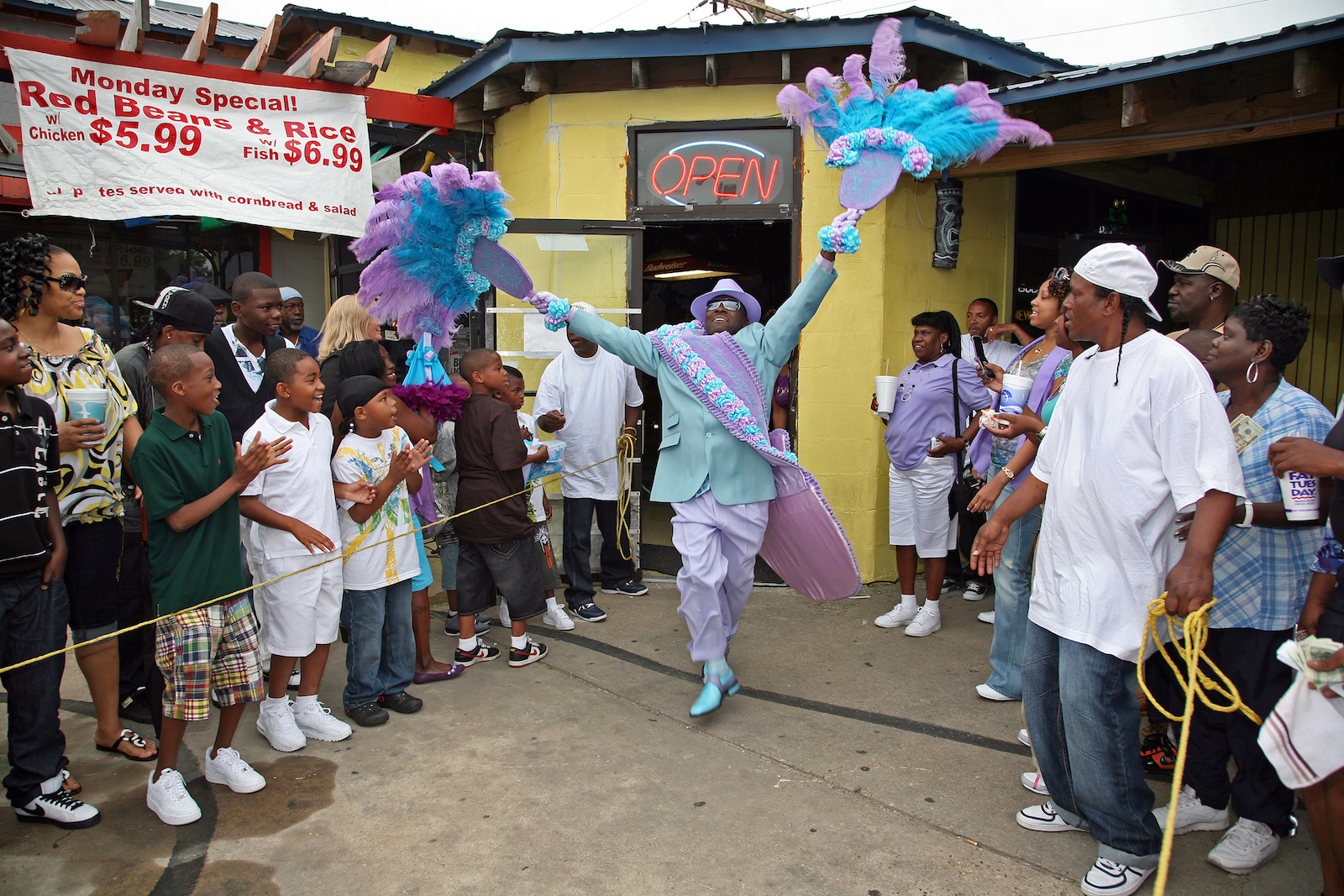
At the head of the parade, the prestigious Grand Marshal set the pace. St. Mary’s Benevolent Association delineated in its bylaws the duties of the Grand Marshal, charging him with directing all parades and funerals, taking care of the association’s banners, flags, and decorations, and reporting members who came to parades out of uniform. Bechet vividly remembered seeing Grand Marshals leading parades in the New Orleans of his youth. The club members, he said, “all have their full dress suits on with sashes that would go down to their knees and they’d have their Grand Marshal who was the leader of the club. He’d have the longest sash. He’d have a sash that would go right down to his shoe tops and it would have gold bangles on it. And on his shoulder, he’d have an emblem, maybe a gold lion. That was his badge. But most of all, the way you could tell the Marshal, it was how he walked. The Marshal, he’d be a man that really could strut.”24
But most of all, the way you could tell the Marshal, it was how he walked. The Marshal, he’d be a man that really could strut.
Louis Armstrong never forgot his feelings of pride and excitement when he saw his father leading a parade as the Grand Marshal. “My real dad was a sharp man, tall and handsome and well built. He made the chicks swoon when he marched by as the Grand Marshal in the Odd Fellows parade. I was very proud to see him in his uniform and his high hat with the beautiful streamer hanging down by his side . . . he strutted by like a peacock at the head of the Odd Fellows parade.”25
Jelly Roll Morton also cherished memories of Sunday parades in his hometown. “Those parades were really tremendous things,” he recalled. “The drums would start off, the trumpets and trombones rolling into something like Stars and Stripes or the National anthem and everybody would strut off down the street, the bass-drum player twirling his beater in the air, the snare drummer throwing his sticks up and bouncing them off the ground, the kids jumping and hollering, the grand marshall [sic] and his aides in their expensive uniforms moving along dignified . . .” Behind the society members and the band (or sometimes in front of them, in Morton’s recollection), spectators formed a “second line,” dozens, even hundreds, of people, walking, marching, and dancing in time to the beat of the music. “They had to make their own parade with broomsticks, kerchiefs, tin pans, any old damn thing,” Bechet recounted. “And they’d take off shouting, singing, following along the sidewalk . . . when I was just a kid I used to get in on a lot of those second lines, singing, dancing, hollering—oh, it just couldn’t be stopped.”26
The parades, fondly remembered by these New Orleans musicians who grew up in the early years of the twentieth century, were not all fanfare and fun. They could be dangerous. Armstrong, Bechet, and Morton all remarked on the violence that often accompanied the parades of their youth. Attacks could come from hostile whites or from blacks defending their turf against the incursions of outsiders. Armstrong remembered trouble when black marchers from other parts of town crossed into the Irish Channel. “If you followed a parade out there you might come home with your head in your hand,” he wrote. “And if the kids were scratched up at all or hurt some, the mothers they’d know right away where their kids had been,” Bechet noted. The trouble usually started with the second-liners, some of whom carried homemade weapons—“drum sticks, baseball bats, and all forms of ammunition we’d call it to combat some of the foe when they came to the dividing line,” according to Morton. “Whenever a parade would get to another district the enemy would be waiting at the dividing line,” he added. “If the parade crossed that line it meant a fight, a terrible fight. The first day I marched a fellow was cut, must have been a hundred times. The fact of it is, there was no parade at no time you couldn’t find a knot on someone’s head where somebody had got hit with a stick or something.” Some families, such as musician Danny Barker’s, refused to let their children second line because of the danger involved in crossing into hostile neighborhoods and being met with knives, baseball bats, and other bludgeons.27
In Jim Crow New Orleans, violence was not an unexpected response to parades where blacks self-confidently and assertively marched through the main streets of town and into districts outside their own neighborhoods. Parades were the perfect vehicle for defiance in a city that had always loved a parade. When association members marched through white and black neighborhoods, downtown and Uptown, they claimed the streets for the black community and challenged segregation. Parades were not only a form of entertainment, but also a “form of protest,” musician Michael White has observed, “a show of strength and unity and a defiant march toward freedom and democracy in a society where such assemblies would normally be discouraged or illegal.” The city’s public spaces were “the very spaces where African-Americans were expected to confirm social inferiority by sitting in the rear of trolley cars and by stepping aside on sidewalks to allow whites to pass,” noted Thomas Brothers. “It would not have taken much to regard the whole thing as a symbolic act of resistance to Jim Crow hegemony, which may partly explain why second lining was so consistently associated with violence.”28
One of the most important parading traditions in New Orleans grew out of the practice of holding a funeral with music. As early as the 1830s, the military routinely buried members with musical honors, as did Masonic organizations, fire fighters, benevolent associations, workers’ organizations, and all sorts of other clubs. Funeral parades “attracted considerable attention,” the Daily Picayune noted in its story about one funeral organized by the German Bakers Society in 1852. A band led the way, the paper reported, followed by a hearse “with tall white plumes, and the coffin wrapped in the American flag. High above the hearse and immediately behind it was borne the banner of the society, conspicuous on which is a representation of a loaf of bread, and the motto ‘This is the Staff of Life’ . . . followed by members of the society, with handsome showy blue scarves and regalia, and last came a number of carriages with female mourners.”29
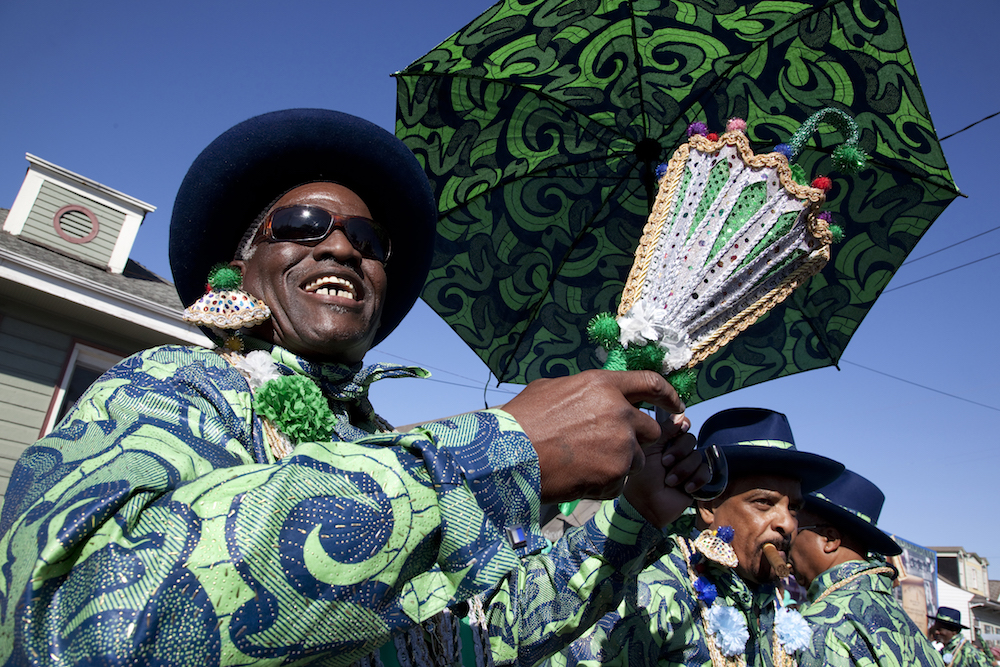
Funeral parades were all too frequent in disease-ridden New Orleans. During the worst of the yellow fever outbreaks in 1853, a reporter for the Daily Crescent reported seeing “In every street . . . long processions, tramping to the solemn music of funeral parades.” Not all funerals featured music, but enough did to upset some people. The Daily Picayune implored the public to cease the musical parading tradition, at least until the epidemic ended, “as the sound of the mournful dirge, as they slowly and sadly bear their companion away, or of the gay and lightsome air as they return from his grave, may have a fatal effect on the nerves of the sick, whose homes are passed in every square, if not in every house . . .” There is no way to tell whether the plea had any effect on parade-loving New Orleanians, who were, perhaps, convinced that the solace of music trumped the recuperative powers of silence. At least one New Orleans citizen thought so. Writing about a fireman’s funeral procession that passed by a temporary yellow fever hospital, William Robinson remembered the effect its band had on patients: “Those at all susceptible from convalescence drank in the sweet sounds with evident delight. To many . . . the music must have called up associations of health and better days, thus breaking the gloom of fatal presentiments.”30
Certainly the music and funeral rituals made deep impressions. Sidney Bechet long remembered the funerals he had witnessed in New Orleans. On the return from the cemetery, he recalled, the band would start playing “‘Oh, Didn’t He Ramble’ . . . they’d play that and it was like saying good-bye for the dead man: that band it would go back all through the town seeing the places where that man had liked to be before he died. The music it was rambling for him one last time. It was seeing the world for him again.”31
Toward the end of the nineteenth century, whites began to abandon the tradition of holding benevolent association– sponsored funerals with brass bands. As insurance became more available to whites, they became less dependent on the mutual aid societies and their traditions. Grumblings about the propriety of funerals with music appeared as early as 1874 when, in a column titled “A Queer Custom Respecting Associations that Bury Their Dead,” a New Orleans Times writer complained about the tradition of “playing a solemn tune to the grave and turning home to the rollicking strains of the ‘Mulligan Guards.’ Won’t some society on the next occasion of this kind break through the indecent custom,” he implored, “and give us a picture of men who are at least nearly [as] melancholy looking . . . coming from the churchyard as going to it.”32
By 1890, the New Orleans States felt that it was “safe to say that in five years from today the hideous brass band and long lines of . . . tired men traveling through mud and slush at funerals will no longer be seen.” The States’s prediction failed to fully materialize, however, as funerals with music continued to be a major attraction of membership in black benevolent associations. Some New Orleanians belonged to more than one association, resulting in large, impressive funerals. Surely few men belonged to as many associations as William H. Penn, an important black community leader and former president of the black longshoreman’s union, who was a member of at least twenty-nine fraternal societies. At his 1902 funeral, black organizations came out “in Full Force,” exclaimed the Daily Picayune, making “the Funeral of W. H. Penn One of the Greatest Events of Its Kind.” The long procession from the First St. Methodist Episcopal church to a tomb belonging to the Friendship Benevolent Association in Lafayette Cemetery, No. 2, featured music and official delegations from his Masonic lodge, the Longshoremen, Ladies’ and Gentlemen’s Perseverance, Friendship Mutual and Benevolent Association, Ladies Friendship, Daughters’ Friendship, Juniors’ Friendship, Young Men’s Hope, and Pure Friendship, among other associations. The funeral for Joseph J. Smith, president of the Zulu Social Aid and Pleasure Club in 1948, was another impressive event, featuring two brass bands, one of them the popular Tuxedo Brass band; nineteen long limousines; and representatives of the four clubs to which Smith belonged. “The procession took almost an hour to travel the short distance to the cemetery,” the Times-Picayune reported. “It was delayed frequently by scores of persons who crowded to the side of the hearse to catch a glimpse of Smith’s baby-blue casket inside.”33
One witness to a Young and True Friends funeral parade in the 1930s wrote, “Marching to the cemetery is a mournful and sad affair, but it’s an important kind of mournfulness and an impressive kind of sadness.” He described the members dressed in black suits, white shirts, black derbies, and white gloves, with black and silver ribbons on their arms. “The organization banner was red lined in silver and bore the words ‘Young and True Friends’ in huge letters of gold,” he observed. “In the center were two hands clasped across a turbulent sea, a white dove and a pair of closely cuddled and burning hearts.”34
Marching to the cemetery is a mournful and sad affair, but it’s an important kind of mournfulness and an impressive kind of sadness.
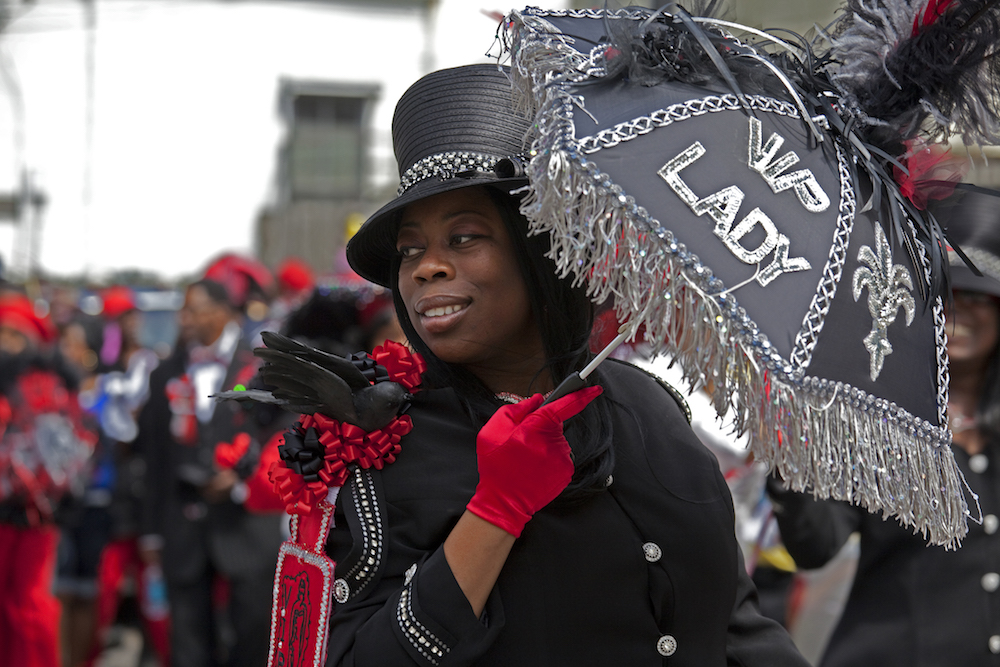
The Young and True Friends procession would have led to the Girod Street Cemetery where the association, like more than 100 other black mutual aid societies, owned its own tomb. Other society tombs in Girod Street, established in 1822, included the Wide Awake Benevolent Association, the Ladies of Labor, the United Sons of Honor, the Ladies Pride of Louisiana, and the Sobriety Benevolent Association. White benevolent associations also owned tombs in Girod Street. The New Lusitanos Benevolent Association owned the grandest tomb in the cemetery until about 1920, when the association disbanded and the neglected structure slowly began to crumble. In 1957 Girod Street Cemetery was demolished.35
Over time, the benevolent associations lost their importance to many residents of New Orleans. White societies began to disappear in the early years of the twentieth century, made redundant by whites’ greater access to insurance, improved social and economic opportunities, changing residential patterns that scattered cohesive ethnic enclaves, and a reluctance among the descendants of immigrants to identify as anything other than American. A few ethnic benevolent associations, such as the San Bartolomeo Society, founded in 1879, the Contessa Entellina Society (1886), and the Cefalutana Benevolent Association (1887), lived on as social and cultural organizations while still offering some assistance to members.36
Although black associations tended to survive longer than most white organizations, bolstered by need, custom, and social offerings, their numbers also began to decrease after the turn of the century, particularly during the 1930s. Many associations could not survive the Great Depression when their members could no longer pay the dues, fines, and taxes that had kept them going. Eventually, the modern welfare state, coupled with the growth of the insurance industry and labor unions, diluted the appeal of mutual aid associations. The societies’ rules and requirements—fining members for missing meetings, demanding that they stay up all night with a sick member, requiring them to take time off from work to attend funerals, and assessing them for funerals, wakes, and tombs—began to seem onerous and outdated when people could receive services and benefits without any of these obligations. Those associations that remained gradually gave up many of their benevolent functions and benefits as the purchase of insurance policies became more prevalent, health care more accessible, and social welfare spending by the city and state more generous. Eventually, social pleasure began to eclipse social welfare, and black benevolent associations transformed into social aid and pleasure clubs, or even just “pleasure clubs,” with few, if any, traditional benevolent features.37
Even some of the social features previously offered by the associations, such as the anniversary parade, became scarce. By the 1970s, only a handful of African American associations continued to parade on their anniversaries. Club parades eventually began to regain their popularity, beginning in the late 1970s and 1980s, inspired perhaps, as Michael White has postulated, by the emergence of new energetic brass bands, such as the Rebirth Brass Band and the Dirty Dozen. New clubs also began to appear, aided in part by the increasing demand for paid performances by second line groups at festivals, particularly the New Orleans Jazz and Heritage Festival. Some the most active social aid and pleasure clubs originated during this time: the Lady and Men Buckjumpers, the Original 4, the Lady Jet-setters, Sudan, the West Bank Steppers, and The Valley of Silent Men. The trend accelerated in the ’90s, with more new clubs staging annual parades: the Black Men of Labor, the Original Big Nine, the Dumaine St. Gang, Nine Times, Old and Nu Style Fellas, the Pigeon Town Steppers, the Perfect Gentlemen, the Lady and Men Rollers, Single Men, The Revolution, the Original Big 7, and the Treme Sidewalk Steppers.38
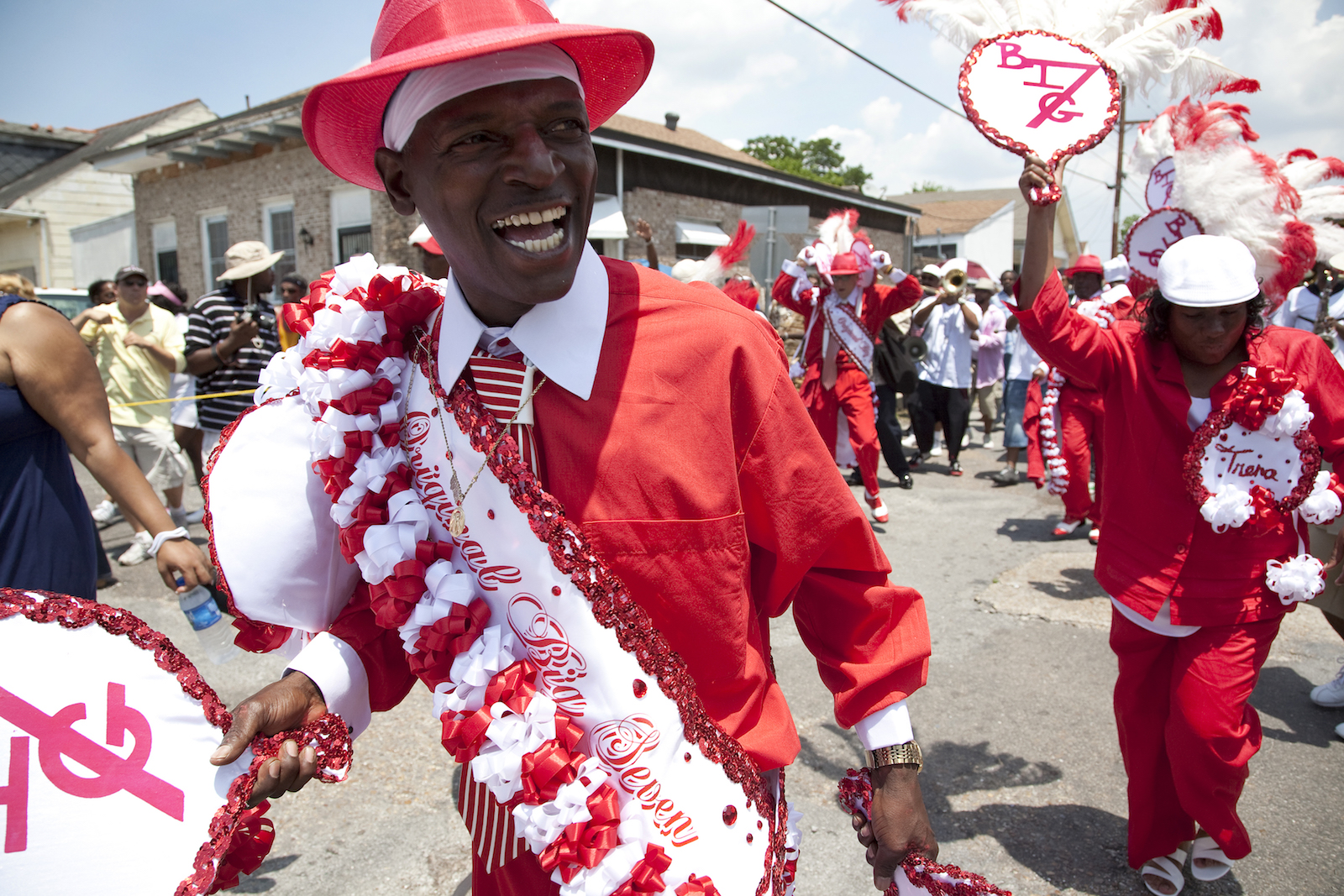
Some of these social aid and pleasure clubs still offer forms of benevolence, such as assistance with funeral and burial expenses, but on the whole, clubs no longer function as mini-insurance associations. Many do, however, donate to local charities and engage in other activities to improve their communities and help their members. The oldest black mutual aid society in New Orleans, the Young Men Olympian Jr. Benevolent Association, founded in 1884, adheres most closely to the traditions of its nineteenth century ancestors, offering burial in society-owned tombs, funerals with music, and medical and financial assistance. Another early social aid and pleasure club, Zulu, has long enjoyed a status all its own. Incorporated in 1916 “for social purposes, to establish between its members ties of friendship and sociability; to establish between them aid and esteem for the promotion of good fellowship and friendly intercourse between the members and their guests,” the club routinely makes donations to schools and scholarship funds and other community organizations, among its other charitable activities. Zulu is the only social aid and pleasure club to act as both a benevolent association, providing sickness and burial assistance to its members, and as a Carnival krewe with its own parade, one of the highlights of Mardi Gras.39
Today’s social aid and pleasure clubs, with their Sunday anniversary parades, jazz funerals, charitable giving, and benevolence stem from the practices of mutual aid societies that preceded them. The importance of these early self-help societies should not be underestimated. In addition to providing their members a measure of economic security and a source of entertainment, they promoted community pride and a sense of self-worth. The benevolent associations of the nineteenth and early twentieth centuries offer shining examples of self-help, racial uplift, community building, and cultural innovation. The clubs that exist today owe much to their predecessors’ inventiveness and imagination. To a great extent, the earlier societies live on in the social aid and pleasure clubs of the present—most visibly and audibly during their annual parades on Sundays in the streets of New Orleans.
For more on second lines, join us at the Center for the Study of the American South on Thursday, September 5, for the opening reception of “New Orleans Second Line Parades: Photographs by Pableaux Johnson.”
This essay first appeared in the Winter 2016 issue (vol. 22, no. 4).
Leslie Gale Parr is the A. Louis Read Distinguished Professor of Communication at Loyola University New Orleans, where she teaches photography and the history of journalism. She is the author of A Will of Her Own: Sarah Towles Reed and the Pursuit of Democracy in Southern Public Education and Ozark Elders: A Photo-Documentary.NOTES
- Alan Lomax, Mister Jelly Roll: The Fortunes of Jelly Roll Morton, New Orleans Creole and ‘Inventor of Jazz’ (Berkeley: University of California Press, 1973), 11; Alexis de Tocqueville, Democracy in America, vol. 2, quoted in Robert L. Harris, “Early Black Benevolent Societies, 1780–1830,” The Massachusetts Review 20, no. 3 (Autumn, 1979): 607; John W. Blassingame, Black New Orleans, 1860–1880 (University of Chicago Press, 1973), 147; Claude F. Jacobs, “Strategies of Neighborhood Health-Care Among New Orleans Blacks: From Voluntary Association to Public Policy” (PhD diss., Tulane University, 1980), 88.
- Elizabeth Wisner, Social Welfare in the South: From Colonial Times to World War I (Baton Rouge: Louisiana State University Press, 1970), 87–89; Julianna Liles Boudreaux, “A History of Philanthropy in New Orleans, 1835–1862” (PhD diss., Tulane University, New Orleans, 1961), 117; Richard Campanella, Bienville’s Dilemma: A Historical Geography of New Orleans (Lafayette: Center for Louisiana Studies, University of Louisiana at Lafayette, 2008), 42, 44; Gary Donaldson, “Bringing Water to the Crescent City: Benjamin Latrobe and the New Orleans Waterworks System, Louisiana History: The Journal of the Louisiana Historical Association 28, no. 4 (Autumn 1987): 381–396; Campanella, Geographies of New Orleans: Urban Fabrics Before the Storm (Lafayette: Center for Louisiana Studies, University of Louisiana at Lafayette, 2006), 83; Campanella, Bienville’s Dilemma, 226; Wisner, Social Welfare in the South, 89; Campanella, Bienville’s Dilemma, 27.
- Daily Picayune, 1843, quoted in Campanella, Bienville’s Dilemma, 168; Richard Campanella, “An Ethnic Geography of New Orleans,” Journal of American History 94, no. 3 (2007): 705; Campanella, Bienville’s Dilemma, 168; Sandra Frink, “Strangers Are Flocking Here: Identity and Anonymity in New Orleans, 1810–1860” American Nineteenth Century History 11, issue 2 (2010): 156; Nathaniel H. Bishop, 1879, quoted in Campanella, Bienville’s Dilemma, 168.
- Boudreaux, “A History of Philanthropy in New Orleans, 1835–1862,” 78–84; Elna C. Green, “National Trends, Regional Differences, Local Circumstances: Social Welfare in New Orleans, 1870s–1920s,” in Before the New Deal: Social Welfare in the South, 1830–1930, ed. Elna C. Green (Athens: University of Georgia Press, 1999), 81; Campanella, Geographies of New Orleans, 329.
- nn Woodruff, “Society Halls in New Orleans: A Survey of Jazz Landmarks, Part II,” The Jazz Archivist: A Newsletter of the William Ransom Hogan Jazz Archive, Tulane University, 21 (2008), 27; Eric Arnesen, Waterfront Workers of New Orleans: Race, Class, and Politics, 1863–1923 (Urbana: University of Illinois Press, 1994), 251; Boudreaux, “A History of Philanthropy in New Orleans, 1835–1862,” 89.
- Blassingame, Black New Orleans, 13, 156, 147; Ann Woodruff, “Society Halls in New Orleans, Part II,” 24.
- Notarial Acts of Louis Andre Martinet, vol. 1, act 8, April 25, 1891, New Orleans Notarial Archives Research Center; Daily Picayune, April 25, 1874, March 6, 1925, in Joseph Logsdon Collection, William Ransom Hogan Jazz Archive, Tulane University; Arnesen, 84; Southwestern Christian Advocate, March 20 1893, in Logsdon Collection; Daily Item, June 36, 1901.
- Fatima Shaik, “The Economy Society and Community Support for Jazz,” The Jazz Archivist: A Newsletter of the William Ransom Hogan Jazz Archive, Tulane University, vol. xviii (2004), 3; Ann Woodruff, “Society Halls in New Orleans: A Survey of Jazz Landmarks, Part I,” The Jazz Archivist: A Newsletter of the William Ransom Hogan Jazz Archive, vol. xx (2007), 16.
- In “Society Halls in New Orleans: A Survey of Jazz Landmarks, Parts I and II,” The Jazz Archivist, vols. xx and xxi (2007), Ann Woodruff offers a valuable selection of society halls that sponsored musical concerts and dances. She notes that the Society of Inseparable Friends (La Société des Amis Inseparables de la Nouvelle Orleans) regularly presented concerts in its hall, as did the Perseverance Society where Joe “King” Oliver, Sidney Bechet, Buddy Bolden, and other early jazz musicians performed; Elna C. Green, “National Trends, Regional Differences, Local Circumstances: Social Welfare in New Orleans, 1870s– 1920s,” 81–84; David T. Beito, From Mutual Aid to the Welfare State: Fraternal Societies and Social Services, 1890–1967 (Chapel Hill: University of North Carolina Press, 2000), 114; William Ivy Hair, Carnival of Fury: Robert Charles and the New Orleans Race Riot of 1900 (Baton Rouge: Louisiana State University Press, 1976), 87, 89; Blassingame, Black New Orleans, 164.
- Southwestern Christian Advocate, December 6, 1883, in Logsdon Collection; Claude Jacobs, “Strategies of Neighborhood Health-Care Among New Orleans Blacks: From Voluntary Association to Public Policy” (PhD diss., Tulane University, 1980), 86; Howard N. Rabinowitz, Race Relations in the Urban South, 1865–1890 (Urbana: University of Illinois Press, 1980), 141; Young and True Friends, Constitution and By-Laws and Rules of Order (1901), 1, in Dixon Family Papers, Amistad Research Center, Tulane University.
- Young and True Friends, Constitution and By-Laws and Rules of Order, 3; Claude Jacobs, “Benevolent Societies of New Orleans Blacks During the Late 19th and Early 20th Centuries,” Louisiana History 29 (Winter 1988): 25; Blassingame, Black New Orleans, 169; Ladies Friends of Faith Benevolent Association Record Book (1914–16), February 16, 1916, in Dixon Family Papers, Amistad Research Center, Tulane University.
- Jacobs, “Benevolent Societies of New Orleans Blacks During the Late 19th and Early 20th Centuries,” 26–27; Beito, From Mutual Aid to the Welfare State, 114–115.
- Beito, From Mutual Aid to the Welfare State, 115; Jacobs, “Benevolent Societies of New Orleans Blacks During the Late 19th and Early 20th Centuries,” 27–29; St. Mary’s Benevolent Association of Louisiana, By-Laws and Rules of Order (1883), 7, in Dixon Family Papers, Amistad Research Center, Tulane University; Harry Joseph Walker, “Negro Benevolent Societies in New Orleans: A Study of Their Structure, Function, and Membership” (MA thesis, Fisk University, 1937), 41, in New Orleans Black Benevolent Associations Collection, 1872–1940, Xavier University Archives and Special Collections, New Orleans.
- Jacobs, “Benevolent Societies of New Orleans Blacks During the Late 19th and Early 20th Centuries,” 30; Ladies Friends of Faith Record Book, February 21, 1915; Love and Charity Benevolent Association of New Orleans, Journal of Minutes (1895–1903), October 12, 1895, in New Orleans Black Benevolent Associations Collection, Xavier University Archives and Special Collections.
- Jacobs, “Benevolent Societies of New Orleans Blacks,” 26; Walker, “Negro Benevolent Societies in New Orleans,” 183; Jacobs, “Benevolent Societies of New Orleans Blacks,” 31; Daily Picayune, January 7, 1890; St. Elizabeth’s Temple, Number Six of the Sisters of the Mysterious Ten, Constitution and By-Laws, (n.d.), 6, in Clubs and Societies/Local Social Aid and Pleasure Clubs (misc), William Ransom Hogan Jazz Archive, Tulane University; Young and True Friends, Constitution, 8–9, 23.
- Ladies Friends of Faith Record Book, March 7, 1915; February 21, 1915; David T. Beito, From Mutual Aid to the Welfare State: Fraternal Societies and Social Services, 1890–1967, 115.
- Ladies Friends of Faith Record Book, October 4, 1914, August 20, 1916, October 3, 1915.
- Ladies Friends of Faith Record Book, April 2, 1916, September 6, 1914, May 21, 1916, September 3, 1916.
- Ladies Friends of Faith, Record Book, September 17, 1916, October 1, 1916; Young and True Friends Benevolent Association, Constitution, 5.
- Walker, “Negro Benevolent Societies in New Orleans,” 40, 269; The Louisianian, February 12, 1881, in Logsdon Collection.
- Henry A. Kmen, Music in New Orleans: The Formative Years, 1791–1841 (Baton Rouge: Louisiana State University Press, 1966), 202; Benjamin Henry Latrobe, The Journals of Benjamin Henry Latrobe, 1799–1820: From Philadelphia to New Orleans, ed. Edward C. Carter II, John C. Van Horne, Lee W. Formwalt (New Haven: Yale University Press, 1980), 186; Kmen, Music in New Orleans, 202, 203.
- The Louisianian, July 16, 1881, July 30, 1881 in Logsdon Collection; Weekly Pelican, September 3, 1887, February 26, 1887, in Logsdon Collection; Daily Picayune, November 30, 1856, in Boudreaux, “A History of Philanthropy in New Orleans, 1835–1862,” 126; New Orleans Item, June 29, 1922; Ann Woodruff, “Society Halls in New Orleans: A Survey of Jazz Landmarks, Part I,” Jazz Archivist 20 (2007): 24.
- Louis Armstrong, Satchmo: My Life in New Orleans (New York: Da Capo Press, 1986), 225; Sidney Bechet, Treat It Gentle: An Autobiography (New York, Da Capo Press, 1978), 61.
- St. Mary’s Benevolent Association of Louisiana, By-Laws and Rules of Order, 1883, 6, in Dixon Family Papers, Amistad Research Center, Tulane University; Bechet, Treat It Gentle, 66.
- Armstrong, Satchmo, 29.
- Lomax, Mister Jelly Roll, 12; Lawrence W. Levine, Black Culture and Black Consciousness: Afro-American Folk Thought From Slavery to Freedom (New York: Oxford University Press, 1981), 233; Bechet, Treat It Gentle, 61.
- Armstrong, Satchmo, 225; Bechet, Treat It Gentle, 62; Lomax, Mister Jelly Roll, 12–13; Hersch, Subversive Sounds, 53.
- Michael White, “New Orleans’s African American Musical Tradition: The Spirit and Soul of the City,” in Seeking Higher Ground: The Hurricane Katrina Crisis, Race, and Public Policy Reader, ed. Manning Marable and Kristen Clarke (New York: Palgrave MacMillan, 2008), 93; Thomas Brothers, Louis Armstrong’s New Orleans (New York: W. W. Norton & Company, 2007), 22.
- Kmen, Music in New Orleans, 207; Daily Picayune, September 9, 1852, in Jack Stewart, Funerals with Music in New Orleans (New Orleans: Save Our Cemeteries, 2004), 16.
- Daily Crescent, August 11, 1853, in Walker, “Negro Benevolent Societies in New Orleans,” 24; Daily Picayune, August 21, 1853; Jack Stewart, Funerals with Music in New Orleans (New Orleans: Save Our Cemeteries, 2004), 17.
- Bechet, Treat It Gentle, 217.
- New Orleans Times, August 15, 1874, quoted in Stewart, Funerals with Music in New Orleans (New Orleans: Save Our Cemeteries, 2004), 21.
- New Orleans States, December 2, 1890, quoted in Stewart, Funerals with Music in New Orleans, 27; Daily Picayune, December 26, 1902; New Orleans Times-Picayune, August 23, 1948.
- Louisiana Writers’ Project, Gumbo Ya-Ya (New York: Houghton Mifflin, 1945), 306.
- Leonard V. Huber and Guy F. Bernard, To Glorious Immortality: The Rise and Fall of the Girod Street Cemetery—New Orleans’ First Protestant Cemetery (New Orleans: Alblen Books, 1961), 68, 72. Lafayette Cemetery No. 2 (1858) contains several society tombs, including two owned and still used by the Young Men Olympian Jr. Benevolent Association, founded in 1884. St. Louis No 1 (1789) and St. Louis No.2 (1823) also hold tombs erected by benevolent associations.
- Walker, “Negro Benevolent Societies in New Orleans,” 18; Conversation with Salvadore Serio, Curator, American Italian Research Library, Jefferson Parish Library, Metairie, Louisiana, March 14, 2016; Seamus P. Metess, “The History of Irish-American Care of the Aged,” Social Science Review 59, no. 1 (March 1985): 28.
- Walker, “Negro Benevolent Societies in New Orleans,” 198, 305, 310.
- Michael G. White, “Reflections of an Authentic Jazz Life in Pre-Katrina New Orleans, Journal of American History 94 (December 2007): 820–7. Special online edition, “Through the Eyes of Katrina: The Past as Prologue?” http://www.journalofamericanhistory.org/projects/katrina/.
- Woodruff, “Society Halls in New Orleans: A Survey of Jazz Landmarks, Part I,” 22; William Jankowiak, Black Social Aid and Pleasure Club: Marching Associations in New Orleans (Jean Lafitte National Historical Park and Preserve, and Tulane University Department of Anthropology, 1989), 64–65; Woodruff, “Society Halls in New Orleans: A Survey of Jazz Landmarks, Part II,” 29–31.

